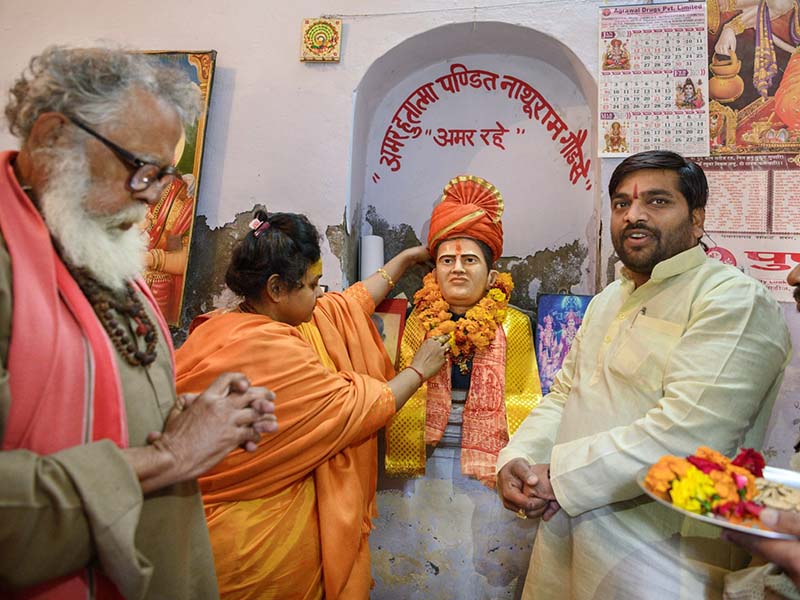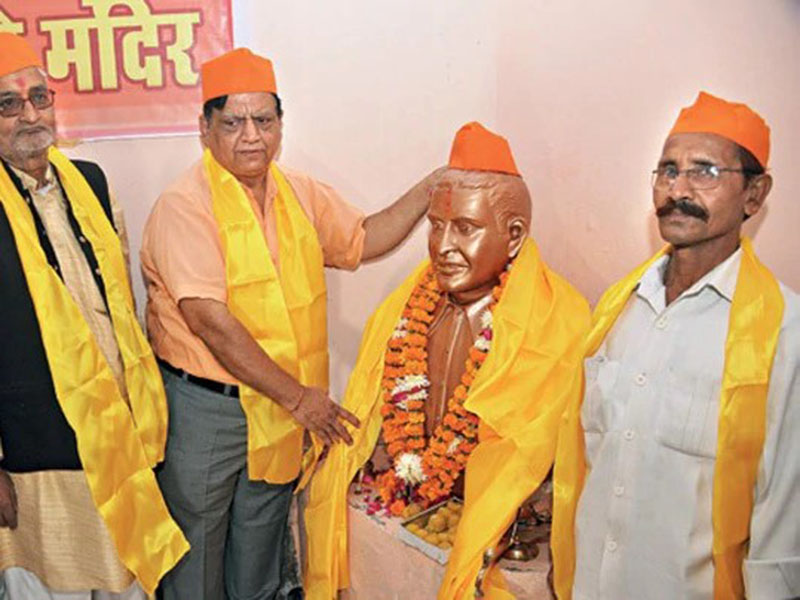By Kumar Ketkar, MP
The ghost of Nathuram Godse has haunted Maharashtra politics for long. Supporters of Nationalist Congress Party (NCP) leader Sharad Pawar have routinely targeted M.K. Gandhi’s assassin in their campaigns across Maharashtra. AIMIM chief Asaduddin Owaisi has called out the divisive atmosphere in India, saying Godse may have killed Gandhi once, but modern-day Godses are killing Gandhi’s India on a daily basis. Beside the fact that Godse was one of the top Twitter trends on Gandhi’s 150th birth anniversary, there’s another reason why leaders in Maharashtra see political capital in targeting the Hindutva icon.
Godse, who hailed from Pune, belonged to the Chitpavan Brahmin caste. This ‘elite’ community matters in the politics of Maharashtra because the Peshwas, who ruled large parts of the region for most of the 18th century, were Chitpavans and responsible for the expansion of the Maratha empire in the east, north and west. The Peshwas’ was the last regime to fall to the East India Company in 1818.
Most other castes in Maharashtra — Dalits, Other Backward Classes (OBCs) and Marathas — have always been against Brahminical hegemony, which has continued due to the Rashtriya Swayamsevak Sangh (RSS)’s base in Nagpur, from where the Maharashtra ex-Chief Minister Devendra Fadnavis and Union Minister Nitin Gadkari – both Brahmins – hail. RSS founder K.B. Hedgewar, its second chief M.S. Golwalkar and Hindutva propounder V.D. Savarkar were all Maharashtrian Brahmins, as is current Sarsanghchalak Mohan Bhagwat.

The assembly elections which were fought in Maharashtra had all the undercurrents and loud overtones of caste. When NCP workers called out Nathuram Godse and the Sangh Parivar, they very smartly targeted the Brahminical domination. No wonder Pawar is popularly known as a “Maratha strongman”. Regarding the RSS, Pawar has famously said, “Otath Ram, potath Nathuram“ (Ram on the lips, Nathuram Godse in the stomach) – a jibe that Asaduddin Owaisi also used for the BJP and its leaders.
It is surely a strategic success of the RSS that it has been able to cultivate a political space for the BJP in a non-Brahmin state like Maharashtra. Ever since the Ayodhya Rath Yatra in 1990 and the demolition of the Babri Masjid by Hindutva forces in 1992, the RSS has been able to mobilise many fringe castes and a section of Marathas in the broader Hindu force. Sharad Pawar knows this.
Sharad Pawar and his supporters are aware of how the Hindutva appeal has penetrated the “Bahujan Samaj” of Maharashtra. But he also knows that caste undercurrents still drive a huge section of Maharashtra and “anti-Brahminical” overtones can put a spanner into the so-called Hindu politics of the BJP. He knew the NCP, or the AIMIM for that matter, could not have achieved great success in the Assembly election by raising Godse and thus targeting the Brahminical hegemony, but they were fully aware of the future political prospects of walking this path.
Ever since the state was carved out in 1960, by and large, the caste Marathas were in power, directly or through institutional structures that they built over the years. Maharashtra’s third chief minister (1963-74) was Vasantrao Naik, who was from the Vanzara tribal community. But he was a direct protege of Yashwantrao Chavan, the most prominent Maratha in national politics in Nehru’s India.
The biggest advantage for the Maratha caste is its demographic presence – nearly 34 per cent, or over four crore of about 11 crore Maharashtrians. They were the vanguard force of the “anti-Brahmin” movement in the pre-Independence era.
In that respect, the Chitpavans are a tiny minority. But most of the social and political leadership, as well as the scholars, came from this “elite caste”: Lokmanya Tilak, Gandhi’s ‘guru’ Gopal Krishna Gokhale, and his most loyal disciple, Vinoba Bhave. A significant section of the bureaucracy, too, belonged to the Chitpavan community, until the reservation policy came into force.
Today, the Chitpavan community provides a strong support base to the RSS. Many of them are its activists. Then there are the “sleeper cells” of the Sangh that can be found in almost all walks of life.
The community has a substantial presence in the senior corporate class. But its main base is among the middle class, while the lower-middle class Chitpavans are largely swayamsevaks. And all these groups have a symbiotic relationship with each other.
The media, educational institutions, banking sector, theatre, arts, etc. are still dominated by the upper castes, where the Chitpavans are in an assertive role. Among professionals like doctors, lawyers, chartered accountants, architects, etc., the Brahminical ethos was always there. It was more pronounced among the non-resident Maharashtrian community, which has embraced Hindutva and Nathuram.
Now, with the growth of the new middle class, the community has expanded its base. Thus, we can see that the Sangh, Savarkar and Godse have a very sizeable constituency. Terror-accused Hindutva mascot Pragya Singh Thakur’s Lok Sabha candidature was vociferously endorsed in Maharashtra by this section.
Her description of Godse as a patriot had huge traction among the Maharashtrian middle class. There have always been groups in the Pune, Mumbai, Nagpur, Nashik, Jalgaon and Konkan belt who would celebrate Godse’s birth anniversary and take out mourning congregations on the day he was hanged. But such events have been held in a largely clandestine manner, rarely reported by the media.
Ever since Narendra Modi began to grow his base, the aggressive Hindutva forces acquired more confidence. Once Amit Shah took charge of the party organisation, Godse supporters became more vocal and active. Just two decades ago, it was considered uncivil to mention his name in social circles. Today, he appears to have become an honourable mention.
What an enormous irony that Godse becomes a haunting “hero” in the same year that the nation celebrated Mahatma Gandhi’s 150th birth anniversary, and the chief spokesperson at all Gandhi-related events, both globally and domestically, is Narendra Modi, an RSS man.
Disclaimer: The opinions expressed within this article are the personal opinions of the author. AlignIndia does not take any responsibility for the content of the article.
Kumar Ketkar, MP, is an Indian journalist, writer and politician. Currently a member of the Rajya Sabha from Maharashtra, he was associated with leading India publications, such as Dainik Divya Marathi, The Economic Times, Loksatta, etc.


